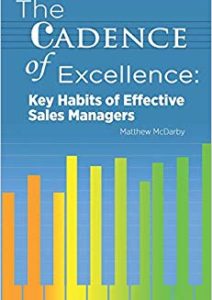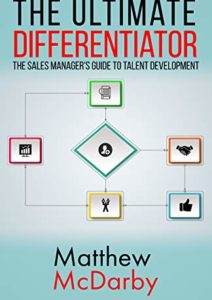If you are a professional seller like me (i.e. an individual sales contributor, sales manager, Chief Sales Officer), then you’ve noticed that your job has changed in a significant way over the last few years. I know that it has changed for me, and the changes are largely driven by the fact that there’s a changing buyer who doesn’t behave exactly the way they did just a few years ago.
A few weeks ago, I posted some simple rules for sales leaders as they contend with a new reality for their salespeople. Let’s look at that new reality and some of the most significant ways in which the seller’s job has changed and why.
1. Understand Buyer Independence
Identifying and aligning with the customer’s buying process used to be somewhat challenging. It is a great deal more difficult now. Depending on whose research you’ve read, it appears that buyers are getting through somewhere between one-half and three-quarters of their buying process without engaging with a salesperson. In other words, they aren’t showing any signs to salespeople that indicate where they are in their buying process until the late stages of that process. That means that influencing a buyer’s thinking nowadays is akin to threading a needle. Sellers are presented with very narrow openings that they must learn to identify and exploit if they hope to differentiate themselves from the competition and win new business.
2. Know the Right Ways to Communicate
Communicating with buyers may appear to be easier (think connecting via social media versus cold calling by phone), but there is massive risk that ineffective communication will backfire on you quickly. Be ever mindful of the boundaries of communication with buyers. Know that for buyers the access and direct engagement enabled by social media is a double-edged sword. It’s nice when they can reach directly to those who can help them, but it’s not so nice when those they don’t want to hear from accost them (or their inboxes) with premature, inappropriate, or poorly focused messages. Salespeople must not violate the basic rules of communication with buyers just because they are posting on LinkedIn or Twitter. Remember that buyers have the power to literally block and ignore both the message and the messenger.
3. Build Your Personal Brand to Build Trust
Helping buyers understand who you are and what you should be known for is hard work. Sellers who want to be seen as opportunity creators, problem solvers, and brokers of valuable resources need to put some effort into their online profiles and messaging to ensure that their personal brand message is clear. Relying exclusively on your company’s brand and market messaging to gain buyers’ trust is a thing of the past. Many of us sellers are not proficient at establishing and refining our personal brands, as we’ve not been trained or equipped with the skills to do so. Meanwhile, opportunities may be slipping by us as buyers struggle to answer the fundamental question, “Can I trust this (sales)person to help me address my challenges and opportunities?”
4. Aim to Meet the Buyer’s Preferred Outcome
Selling something without a complete understanding of the business outcome the buyer wants to achieve is no longer acceptable. It used to be that average salespeople could get away with selling their wares to customers without really caring much about a successful outcome. Whether a customer succeeded or failed was less important than getting the sale. Guess what? Salespeople who behave that way are going the way of the Dodo. In an era in which “trust” has become a frequent, formal decision criterion for buyers, sellers who cannot be trusted to deliver a positive outcome for their customers can no longer compete.
5. More Than Ever Before: Be Patient
Being impatient with buyers was never an endearing quality for us to demonstrate, but now, we have to be more patient than ever if we hope to engage effectively with buyers and create value for them. We have to respect that what we have to say about a customer’s situation or a market issue or opportunity is just one small piece of the puzzle for buyers. They seek information from a myriad of sources before they act to address problems or opportunities in their business. There will be times when the one thing we have to say or the one article that we share will be the difference maker, the proverbial straw that broke the camel’s back that causes a buyer to act. For the most part, however, what we have to offer or share is typically just part of the noise that buyers have to parse through. Let’s not be surprised when it takes a buyer a while to get back to us. In fact, we should rejoice when they do!
The world of buying and selling has changed yet again, and those who want to succeed as sellers would be well served to pay attention to how our job has changed. Your future success depends on it.
Related Posts:
- Evolution in Progress: How the Entrepreneur Is Changing the World
- The Emergence of Salesperson 2.0
- Salespeople as Entrepreneurs
Get your free trial of Pipeliner CRM now.














